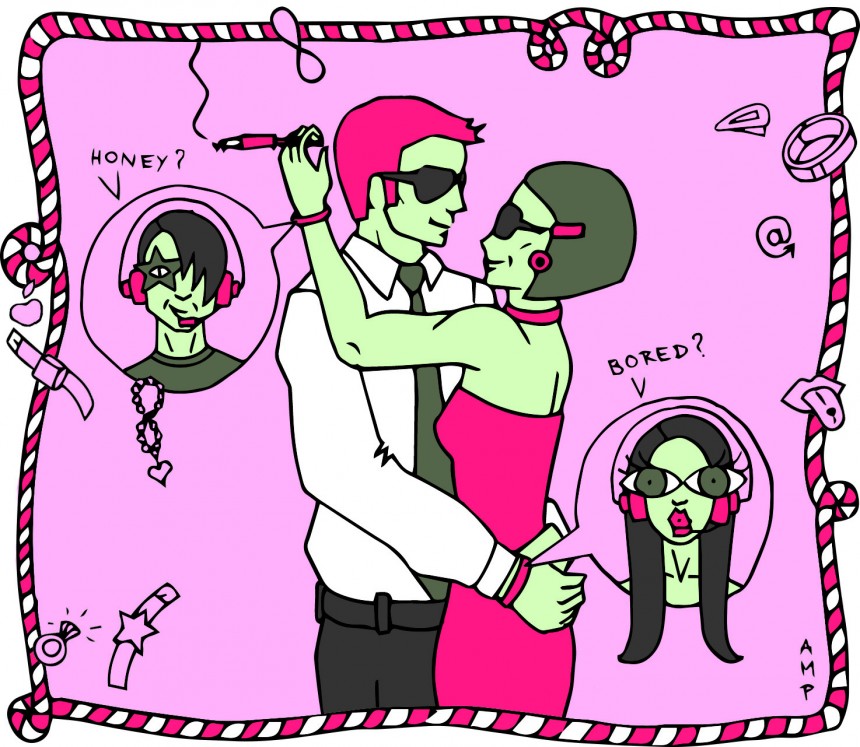
There’s no doubt about it: I’m a techie. And I have my great grandparents to blame—or to thank. From the day they gave me a Commodore 64 in 1982, I fell in love with technology. The pages of my past are littered with abandoned gadgets that were cool in the day, but look antiquated now. Despite the passage of time, those old devices can be hard to let go of—just like outfits that scream, “I’m not from this era.” Yes, this is one thing fashion and technology have in common. But, in this day and age, it’s not the only thing.
The launch of the Apple Watch has put wearable tech at the forefront. Sure, smartwatches have been around for years—Fossil released a “wrist PDA” running Palm OS back in 2003, and Android Wear had a head start on Apple—but the category gained little traction. It took a company that could position these wearables as fashion more than tech to open the doors to mainstream. And still, this form of hi-tech jewelry is in its infancy.
The Apple Watch may be getting all the buzz right now, but it isn’t the only game in town when it comes to wearable technology. Google Glass showed how wearable tech could change our lives. And though the magical eye gear has been retired for now—and it was never good fashion—there’s little doubt the technology will be part of our lives in some form not far down the road. Perhaps Google Contact Lenses?
Watches and glasses have clear purposes, but the benefits of other hi-tech jewelry are harder to figure out. Enter the smart ring. What makes a ring smart? Do we really need connected devices wrapped around our fingers?
At least five different contenders have their eyes set on your digits: the MOTA SmartRing; the Smarty Ring; Ringly; the Fin Ring; and the very creatively named Ring. The purpose of these devices is to alert you of notifications on your phone through vibration, control music playback by waving your hand, trigger your smartphone’s camera, or even compose a tweet.
Basically, with a smart ring, you can do things that you can already do with the finger upon which it resides. For those who think a smartwatch or Glass is superfluous, the smart ring may be more so. At least, when encountering someone at a party, Glass can remind you that “Mephistopheles” is not their name.
But the promise is there, and if we’re going to embrace this future of hi-tech jewelry and accessories, it’s time for companies to start thinking outside the box. Let’s go beyond notifications and heart rate measurement and build in some truly useful capabilities.
For example, hair barrettes haven’t changed much in centuries—certainly not since the invention of the elongated barrette in 1972. It’s time for the traditional to meet the modern in the form of a clip that isn’t simply connected, but that connects you. Imagine having a Wi-Fi hotspot wherever you go, transferring data at 100mbps—right from your head.
Or how about tackling the communication problem posed by foreign languages with a tongue ring that doubles as a universal translator? Around Tokyo, you could speak English, but everyone else would hear Japanese. For two-way communication, tie this into earrings that take Japanese and translate it into English just before it enters your ear canal.
Linguistic magic isn’t the only trick smart earrings could perform. They could also serve as hearing aids, amplifying sound upon its arrival at your lobes.
The world of hi-tech jewelry and fashion has so much promise. It’s everything I dreamed of as a 10-year-old attached at the hip to a 300-baud modem. I must admit, that was a pretty bulky belt buckle—and it made Jony Ive throw up a little—but it was tech. So I, for one, look forward to the connected body.





